As a plant grows, it needs more space to continue thriving. This is especially true for plants grown in a container/pot. But how do you know when it’s time to repot your plant? What are some of the signs that your container is too small? Follow along to discover 7 signs you need to repot your plant.
Your Plant’s Roots Are Visible
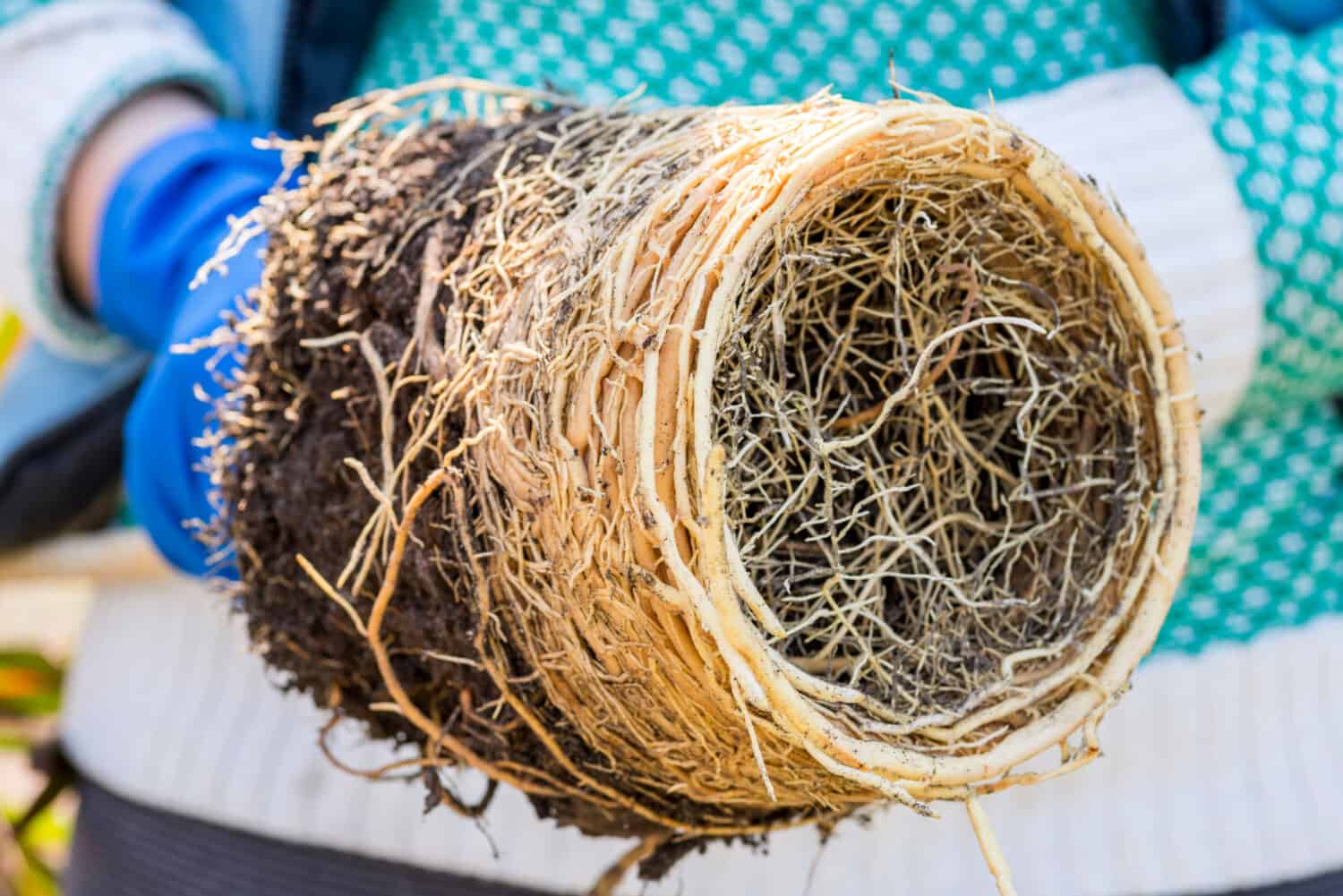
If you can see your plant’s roots, it’s time to place it in a larger container.
©Andrii Spy_k/Shutterstock.com
The first sign on our list is one of the most common. If you see your plant’s roots sticking out from the soil, this is a sign that the plant is too small for the container. If you aren’t careful or fast enough, your plant can become root-bound, which is when the roots of a plant are bound tightly in the shape of the container. This can stress your plant out, leading to a slowdown in growth.
Just because you can see your plant’s roots, though, doesn’t mean it’s root-bound. It can also mean that there isn’t enough soil in the container. This is a common issue when transplanting plants.
It Stops Growing

Plants can stop growing when the roots are bound; the plant lacks sunlight or water due to pests.
©Krichevtseva/Shutterstock.com
Another sign it’s time to transplant your plant into a larger container is if your plant stops growing. This happens because the roots don’t have space to breathe or grow. The lack of space causes your plant to die slowly. Plants, though, can stop growing for many reasons. If your plant stops or slows its growth, it might need additional nutrients or it’s sick. This also happens when plants don’t get enough water or sunlight.
Your Plant Has Yellowing Leaves
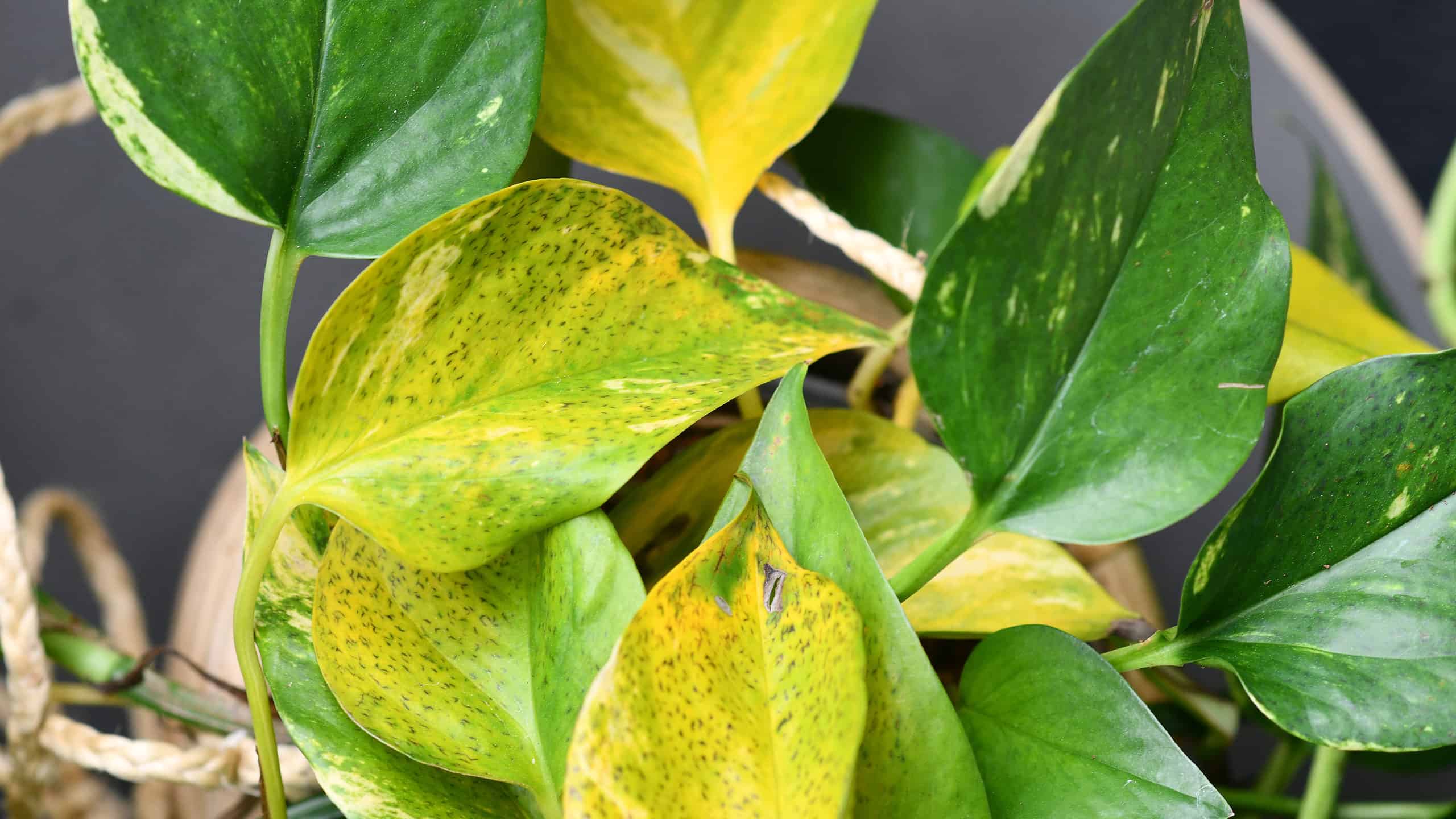
Leaves on a plant can turn yellow for many reasons.
©Shadow Inspiration/Shutterstock.com
The third sign is more in your face. A reason why you may need to repot your plant is if the leaves turn yellow. The problem with yellowing leaves is that it’s a sign of many things, like slow growth. For instance, a plant’s leaves also turn yellow when the soil lacks nutrients, they receive too little or too much water, or the plant is sick. A plant can get sick if invaded by pests like aphids.
The Leaves Are Falling
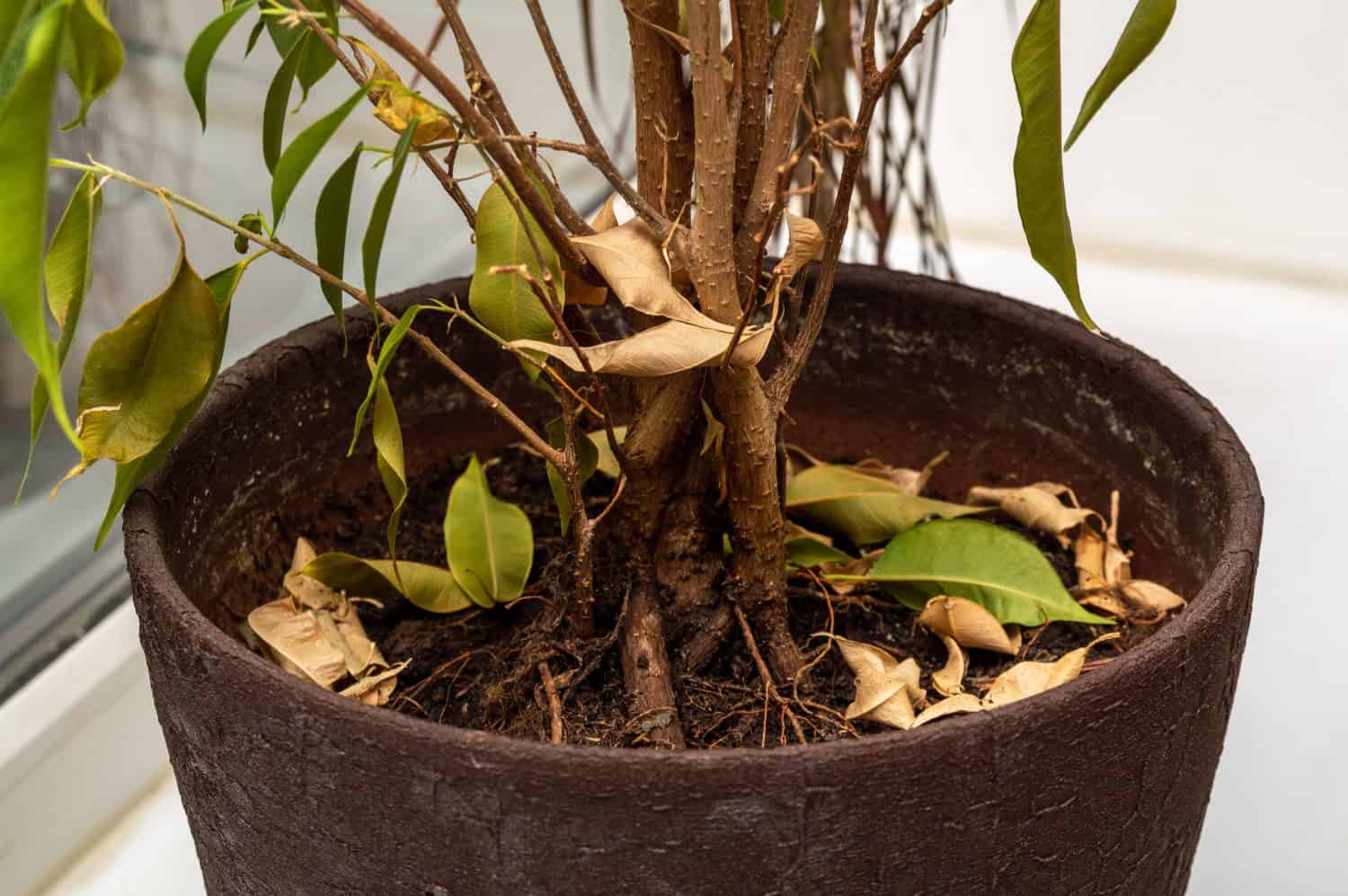
You may need to repot your plant if the leaves are constantly falling.
©Semiglass/Shutterstock.com
The health of your plant’s leaves can tell you a lot about your plant. While it’s normal for leaves to fall when they’ve grown too large or are old, the falling of leaves can also represent problems. This is a common sign that your plant doesn’t have enough space, and you must repot it. This can be because your plant has grown too large or the soil/container is sick.
Soil is Too Wet
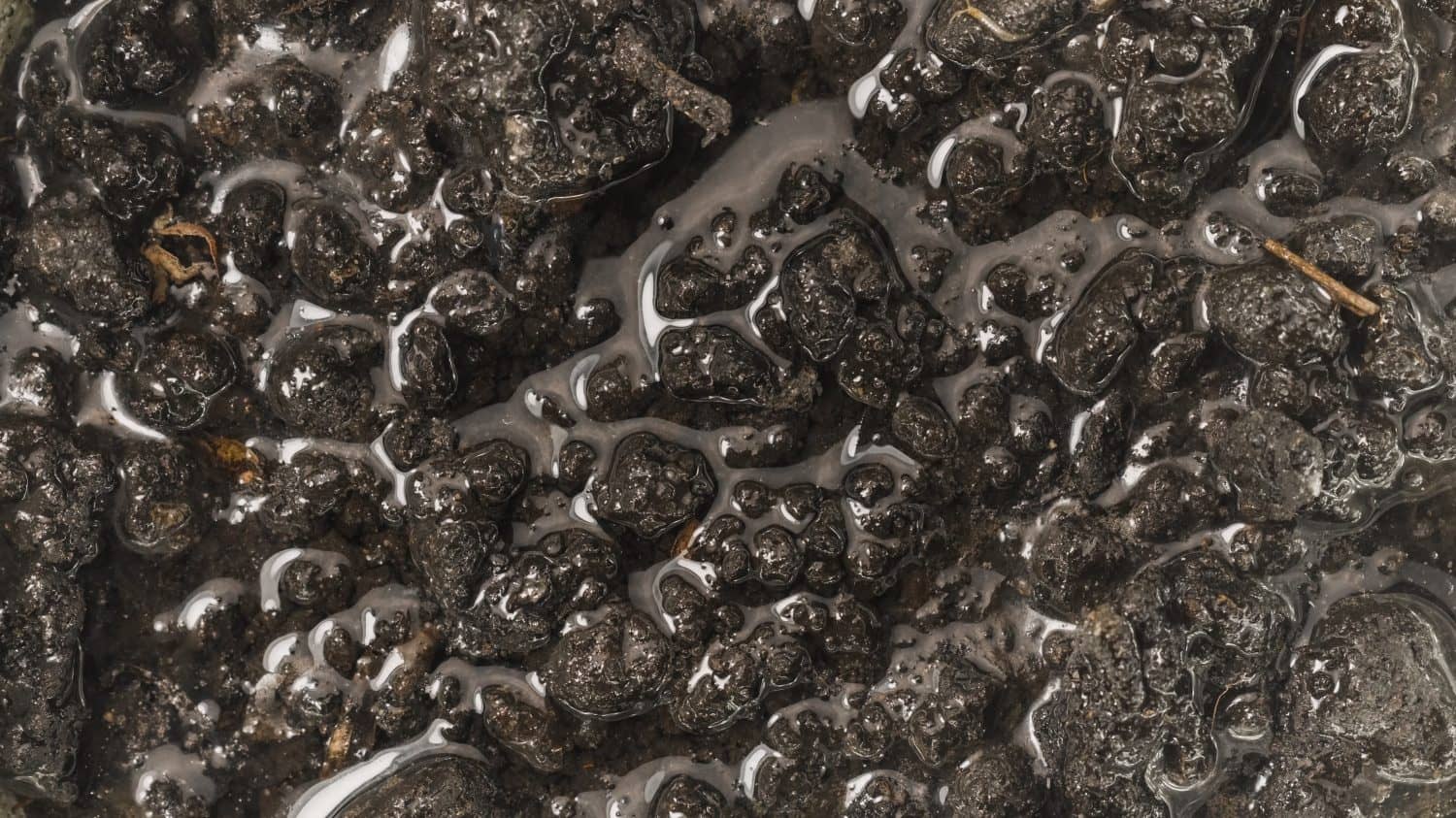
Wet soil can suffocate your plant’s roots. Drainage is important.
©SvedOliver/Shutterstock.com
Wet soil can be confusing. When your plant’s soil is too wet, it can mean that your plant’s roots are thick and tangled. If the roots of a plant are too thick, sometimes water doesn’t soak through, causing wet soil on the top of your container. The opposite is true, too, though! Soil that dries too quickly may also mean it’s time to transplant your plant.
Soil is Raised
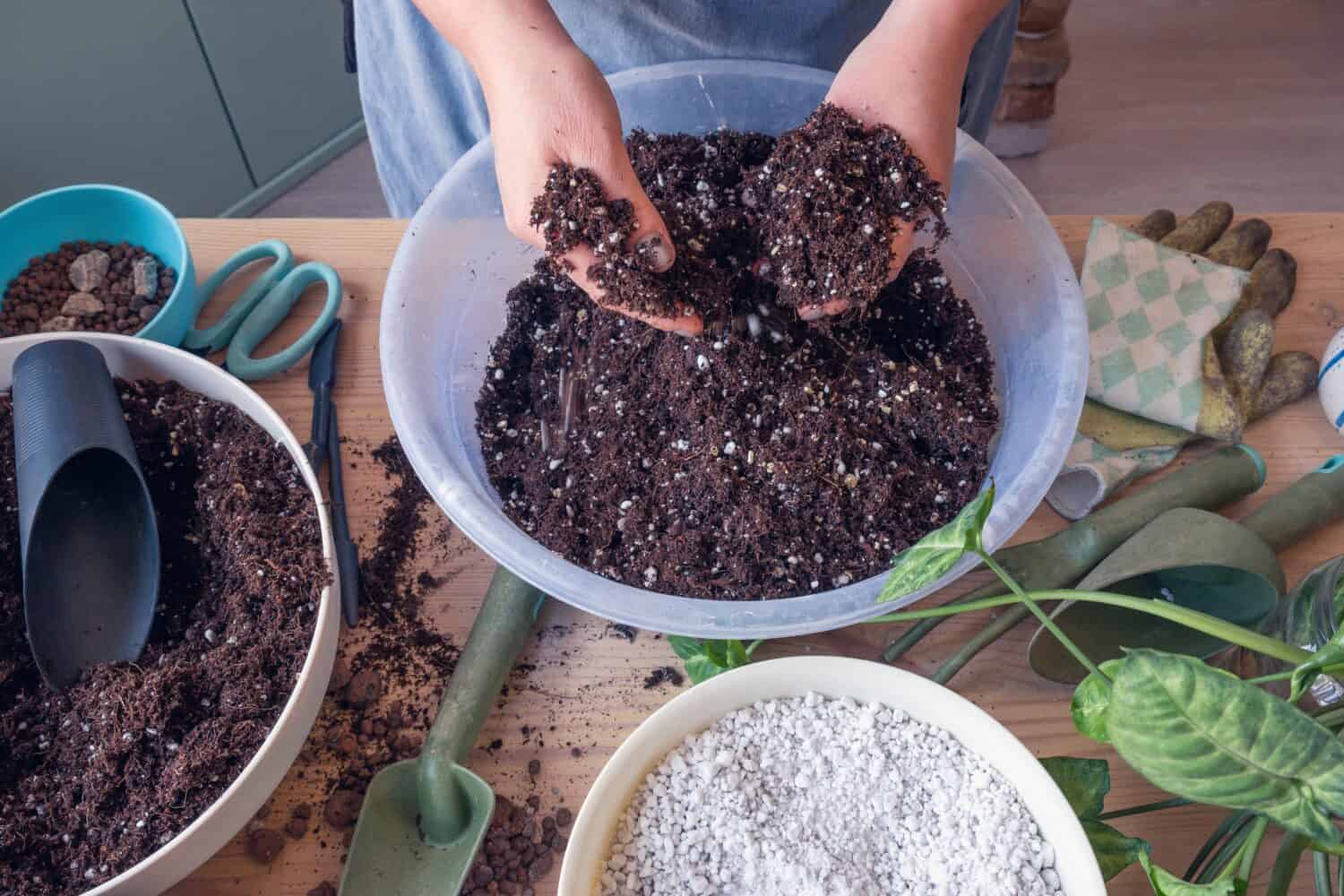
Raised soil might be a sign that your plant’s roots are bound.
©Cem Selvi/Shutterstock.com
Have you noticed your plant’s top layer of soil is raised? It doesn’t have to be much to point to a problem. When the roots are thick and bound, they can lift the soil and sometimes even stick out.
The Roots Stick Out of Drainage Holes
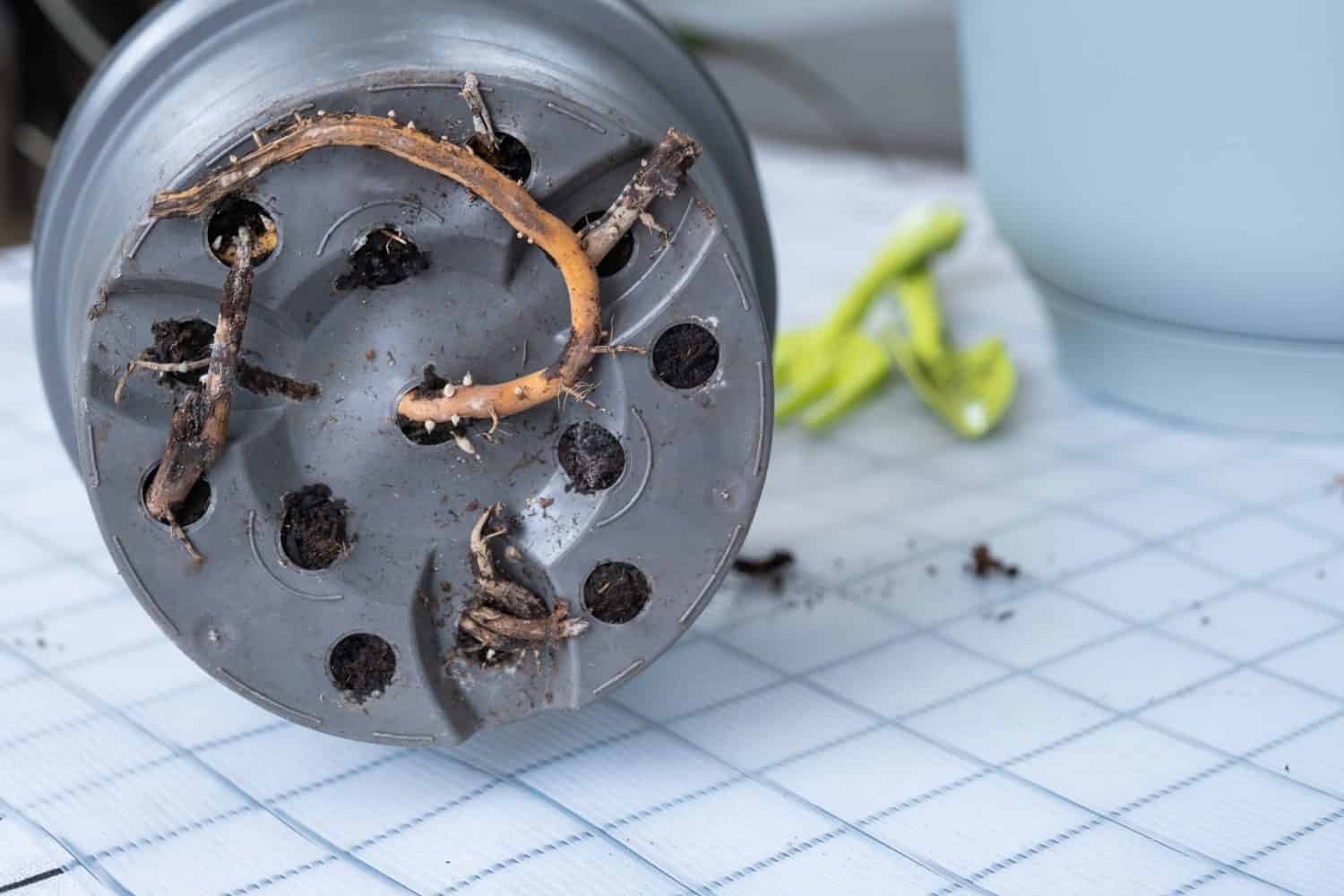
If your plant’s roots are sticking out of the drainage holes, it’s time to repot it.
©Simol1407/Shutterstock.com
This last sign you need to repot your plant connects with a few others on this list. Technically, roots sticking out of the bottom of your container (in drainage holes) are generally visible. You can likely see some roots on the top layer of soil.
Plants are strong and resilient. Even with limited space, a plant’s roots will continue stretching and growing, looking for spaces to flourish. Sometimes, these spaces are drainage holes. Interestingly, some roots are strong enough to puncture through the bottom and sides of containers. They may even grow through cracks.
Summary of the 7 Signs You Need to Repot Your Plant
| # | Signs |
|---|---|
| 1 | The plant’s roots are visible. |
| 2 | It stops growing. |
| 3 | The plant’s leaves are yellowing. |
| 4 | The leaves on your plant are falling. |
| 5 | Your plant’s soil is too wet. |
| 6 | The soil in your container is raised. |
| 7 | The roots stick out of the drainage holes. |
The photo featured at the top of this post is © pundapanda/Shutterstock.com
Thank you for reading! Have some feedback for us? Contact the AZ Animals editorial team.







